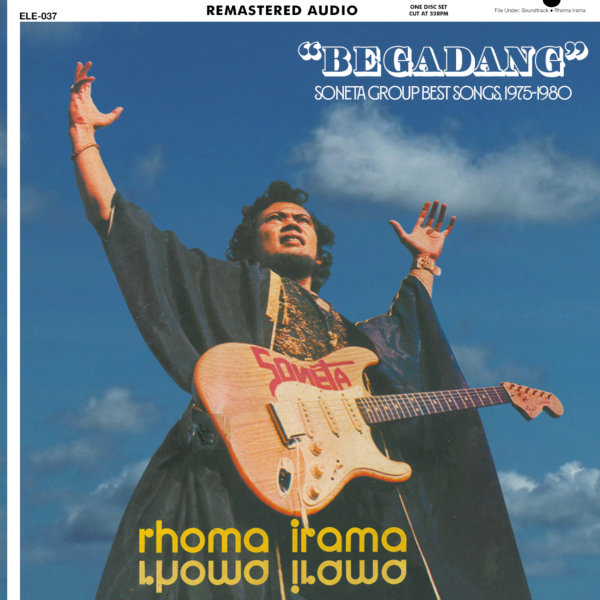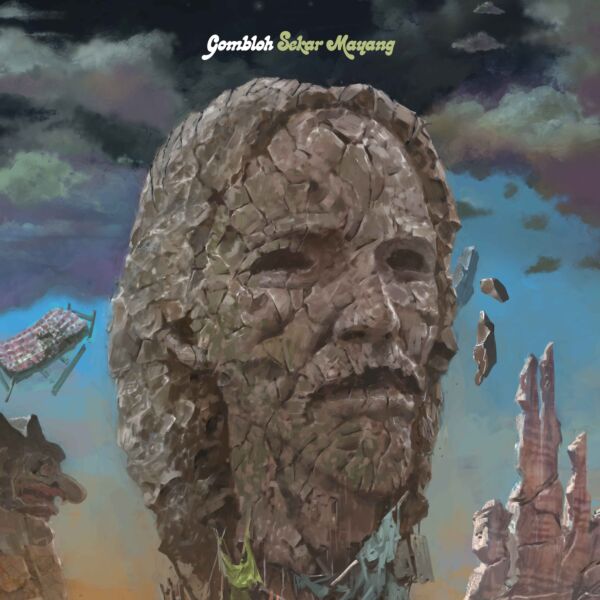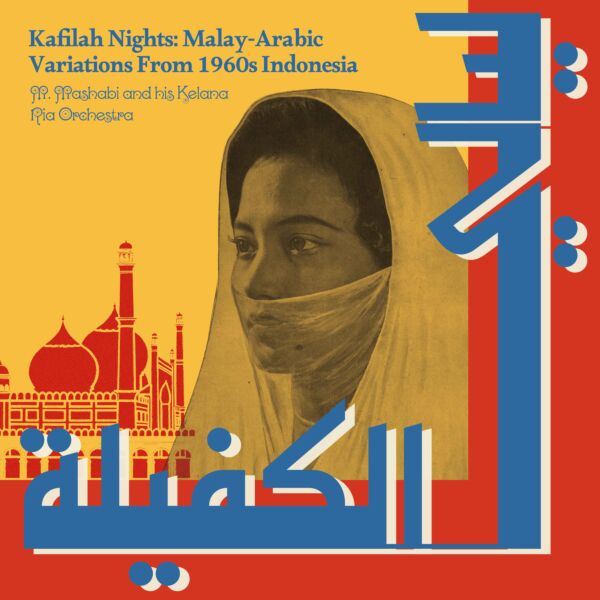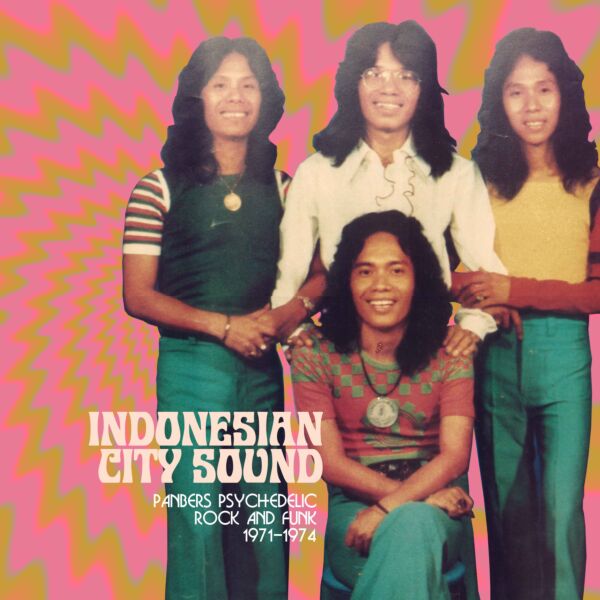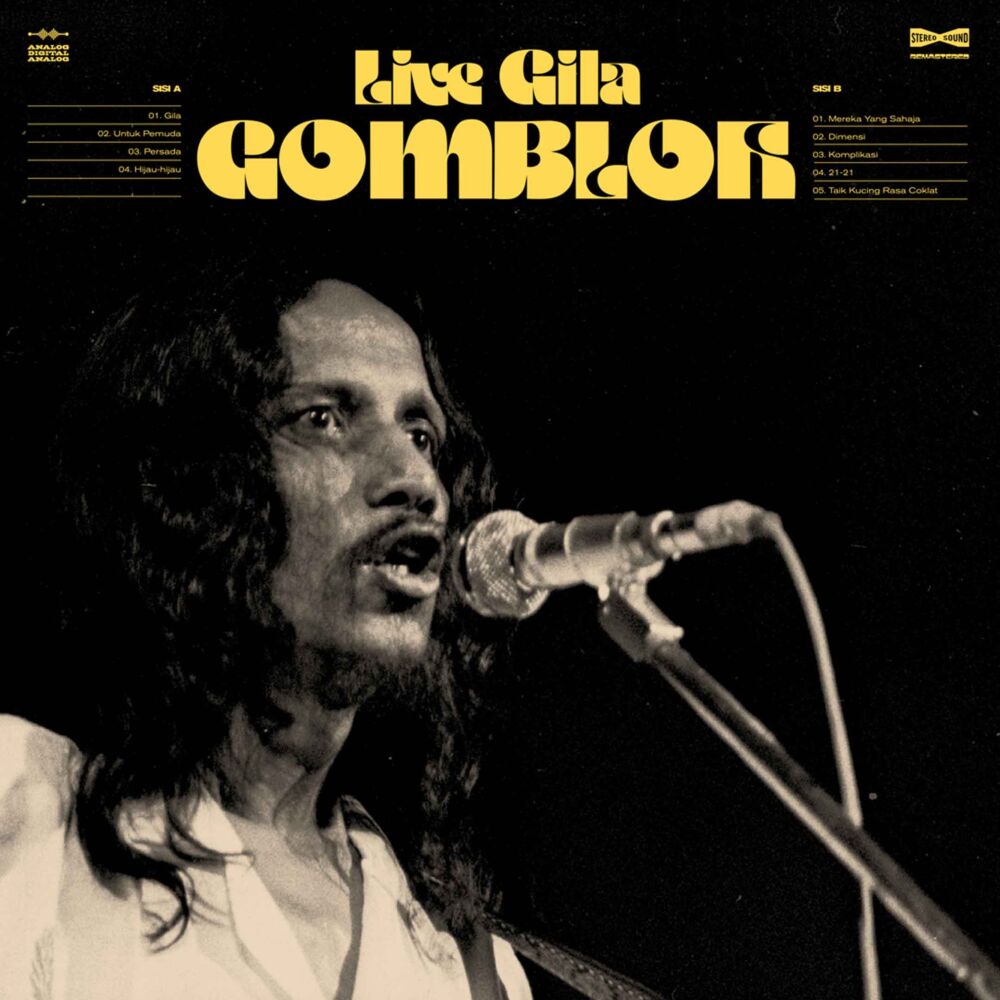
LIVE GILA
(remasterd for vinyl at Abbey Road Studios, London) A straight-up folk record in the mold of Bob Dylan's Blood on the Tracks, one that catapults Glomboh onto national spotlight.
| Genre | Rock |
|---|---|
| Format | VINYL |
| Cat. no | ELE022 |
| Label | ELEVATION RECORDS |
| Artist | GOMBLOH |
| Release Date | 24/11/2023 |
| Carrier | LP |
| Barcode | 697067918357 |
Out of stock
TRACKLIST A1. Gila A2. Untuk Pemuda A3. Persada A4. Hijau-Hijau B1. Mereka Yang Sahaja B2. Dimensi B3. Komplikasi B4. 21-21 B9. Taik Kucing Rasa Coklat INFO Most of Gen X-ers who grew up in the mid-1980s Indonesia must have seen Soedjarwoto Soemarsono, known with his nom de guerre šGombloh› performing on a state-run television station, playing some of his biggest hits from that era, pop gems like šKugadaikan Cintaku (I Pawn Off My Love)›, šSetengah Gila (Half-Crazy).› But of course, it is not fair to judge Gombloh only from these hits. Dig deeper and you will find buried treasure in his early stuff from Indra Records, and there are many of them. His album with the band Lemon Tree™s Anno ˜69 (yes, that™s the name of the band) is all remarkable, but what he did for Chandra Records was no less spectacular. How can you go wrong with songs like šKebyar-Kebyar›, the unofficial national anthem for Indonesia, dan šBerita Cuaca› one of the better epic songs in a catalogue full of epochal songs? These were all long out of print and in our journey to source the original master for these albums we met Bob Djumara of Nirwana Records, the Surabaya, East Java-based label which broke Gombloh into the mainstream in the mid-1980s. Almost all albums Gombloh recorded for his early labels, Indra Records and Chandra Records were critically acclaimed, but commercially they bombed, big time. Nirwana Records came up with an ingenious plan. What if they recorded Gombloh performing live and release it as is. After all, the first song in Gombloh debut record Nadia & Atmospheer is him strumming on his guitar backed by the cheering of a crowd, who could be heard going wild when he hurled that epithet šbastard› at the end of the song The end result is a brilliant recording which despite being recorded live the sound quality so pristine leading many to doubt the claim of being live. Regardless, Nirwana shipped a decent number of units and Gombloh could buy his first car, a Katana Jeep, with money from the royalty. One of the best things about Live Gila is its perfect sequencing, beginning with Gombloh™s social commentary on the rich™s debauched lifestyle of preying on young boys and girls, one of the most popular subjects allowed by the censoring machine of the New Order authoritarian government. The second song šUntuk Persada› is a soaring ode to the nation. For this song, Gombloh could be heard drawing his inspiration from The Police, which was undoubtedly popular in the early 1980s, even in a faraway port city like Surabaya. Listening to this record as a whole (we omitted the last song from the original master tape šBagimu Negeri› which sounds too jingoistic), we could not help but point to some of similarities it has with Bob Dylan™s Blood on the Tracks. Not a single composition in this record sound indigenous (the Malay-influenced rock of Panbers or Koes Plus come to mind); they all sound modern and effortlessly catchy, and had it not been for the language, this album could be mistaken for a musical output from someone growing up in Laurel Canyon or Southern France. There are only limited copies of vinyl records in the second-hand market today available for Gombloh music, if at all. For his ardent fans, they have to scavenge for old cassettes to continue to be able to enjoy his music and have to pay top dollar for that. In Indonesia, where he was a superstar in the early 1980s, Gombloh was largely forgotten. With this project, we can only hope that the time is ripe for Gombloh to reemerge and now, more than ever, his music could speak to a bigger audience.


